Relativamente ao artigo que hoje foi publicado no Jornal Público e que se encontra em baixo no blog ("Indústria do fitness: a falácia da nova medicina"), é importante tornar algumas coisas mais claras. Eu não sou necessariamente contra o conjunto das práticas do fitness. Eu sou é contra a forma como essas práticas são realizadas correntemente nos ginásios. Ainda ontem tratei um doente, com problemas de ordem postural, que tinha sido encaminhado por um médico para um personal trainer de musculação no Holmes Place. Ora, malvados sejam estes médicos ignorantes que desconhecem por completo aquilo que se faz nos ginásios (para além do facto de não entenderem que o paradigma musculação está quase sempre errado na questão do tratamento de deformidades)!
Em termos práticos, gostaria de ver a indústria do fitness ser preenchida por profissionais de nível qualificado. Os fisioterapeutas são, regra geral, profissionais bem formados, bem capazes de ser excelentes instrutores de fitness (neste caso fitness seguro), assim como brilhantes personal trainers (neste caso, poderiam dar uma componente “clínica” ao treino); seria óptimo para muitos fisioterapeutas que não têm grandes oportunidades de trabalho, tal como seria ideal para os próprios atletas. Portanto, apesar de não corresponder bem ao nosso desejo de trabalho, a intervenção no fitness e na indústria do bem estar (não deixando sempre de ser uma verdadeira indústria) constitui uma oportunidade de trabalho para os fisioterapeutas.
Em termos práticos, gostaria de ver a indústria do fitness ser preenchida por profissionais de nível qualificado. Os fisioterapeutas são, regra geral, profissionais bem formados, bem capazes de ser excelentes instrutores de fitness (neste caso fitness seguro), assim como brilhantes personal trainers (neste caso, poderiam dar uma componente “clínica” ao treino); seria óptimo para muitos fisioterapeutas que não têm grandes oportunidades de trabalho, tal como seria ideal para os próprios atletas. Portanto, apesar de não corresponder bem ao nosso desejo de trabalho, a intervenção no fitness e na indústria do bem estar (não deixando sempre de ser uma verdadeira indústria) constitui uma oportunidade de trabalho para os fisioterapeutas.










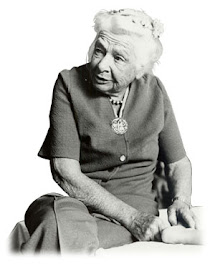





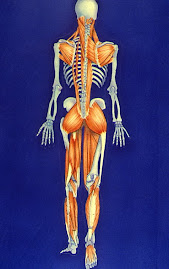
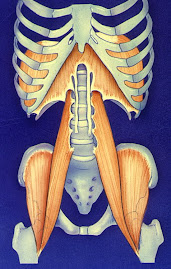





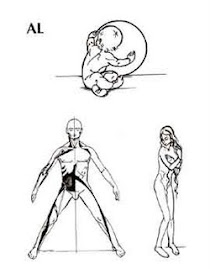


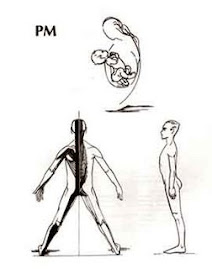





.jpg)




9 comentários:
Pois é sr. Luis...se o seu objectivo era outro ao escrever o seu artigo de opinião...perdeu a melhor oportunidade da sua vida...e espero bem que não lhe seja dada outra. Em qualquer área profissional há bons e maus profissionais e a sua não é excepção...podendo-lhe eu adiantar que também faço parte dela e da outra que o sr. insulta. Artigos de opinião como o seu envergonham-nos a nós...fisioterapeutas!!! Arranje qualquer coisa para fazer...talvez inscrever-se num curso de Ciências da Motricidade, e assim ficar a saber que os Planos do Corpo são 3, Sagital, Frontal e Transversal e cardio vascular, tal como o sr. se refere no seu artigo é uma componente da condição física.
Caro Luis,
Quando li o seu artigo no publico fiquei bastante preocupado consigo. Dispara contra tudo e todos como se todos fossem incompetentes. Será voce a unica personalidade preocupada com as pessoas? Serão apenas os fisioterapeutas campetentes para ajudar as pessoas? Ainda agora no seu esclarecimento dispara contra a classe médica.
Já alguma vez foi a um centro onde se utilizam as plataformas? Saiba que há pessoas que não saltam? Exactamente porque no historial que se preenche sobre as socias há um leque de situações onde se avalia se há reservas para determinados exercicios. Quando há determinadas situações recomenda-se as pessoas para outras actividades incluindo fisioterapia. Se escrever outro artigo recomendo-lhe que não faça analises superficiais de qualquer actividade, (médica, fitness etc)pois é a sua falta de rigor que fará de si um mau profissional.
Pedro Serras
Este artigo é simplesmente ridiculo e demonstra a sua baixa formação pessoal.
Em todas as areas e profissões existem bons e maus profissionais (médicos, professores de fitness, fisioterapeutas, etc), vir agora dizer que os outros são todos uns incompetentes e que voces é que são bons é simplesmente ridículo.
Caso não saiba muitos desses profissionais do fitness a que se refere no seu artigo tiraram uma licenciatura (de 5 anos, enquanto a sua é de 4) e são sujeitos a formações complementares com regularidade.
Vá mas é tratar-se e guarde o veneno só para sí.
O Sr está claramente mal informado!
Antes de acusar e difamar pessoas aprenda mais sobre a área.
RA
Ilustre,
Recebi um mail de um amigo com a indicação do seu artigo do publico. Depois de ler, vi que fez uma clarificação.
Como estou ligado ao fitness e a outras áreas adjacentes não posso deixar de dar-lhe os parabens pela forma bonita e erudita em que os termos que utiliza são sem duvida apenas ao alcance de alguns. Confesso que estou fora desses "alguns" já que os termos são demasiados complexos para serem usados. Há sinonimos bastante mais acessiveis. Colocando agora de parte a escrita, depois de ler reflecti sobre o artigo e não consegui alcançar (certamente não terei capacidade para tal) qual o objectivo do seu artigo. De facto só li criticas e ataques a um leque de profissionais das mais variaveis profissões. Não vi qualquer tipo de sugestão practica para melhorar aquilo que critica. De facto reflectindo do ponto de vista do "consumidor" nossos e possivelmente seus clientes tiraria algumas conclusões.
- Vou deixar de fazer exercicio porque neste artigo o exercicio é uma falacia.
- Todos os ginasios são um risco para a minha saude.
- Todos os profissionais desses mesmos ginasios (muitos fisioterapeutas) são incompetentes pois trabalham em ginasios.
- Nos ginasios só se fazem coisas incorrectas para a saude.
- Se quero ter muito cuidado com a minha saude, vou ter de procurar este rapaz.
Enfim, o seu artigo não ajuda em nada ninguem. Nem a si proprio.
Quando aborda o atestado médico (sua obrigação ou não), nota-se claramente a sua veia teorica e pouco práctica. Quem passa pelas situações sabe que os atestados eram meros papeis passados por médicos que depois de fazerem umas perguntas de rotina, medirem a tensão arterial e oscultarem o batimento cardiaco passam o respectivo atestado.
Acredito que, quem tenha lido o artigo avalie que o Luis é a unica entidade credivel e preocupada com este assunto. É inclusive Obsessivo quanto ao assunto. Fico há espera de um artigo tão superficial e teorico quanto este referindo a ergonomia dos objectos que utilizamos no nosso dia a dia. Malvados os contrutores de automoveis com os seus bancos ajustaveis, malvados os construtores de cadeiras, bancos, sofás que se esquecem da nossa postura, malvados os senhores que produzem sapatos altos para as senhoras, malvados todos os ginasios de musculação, malvado o médico que envia alguem para o personal trainer fazer musculação (seria o personal trainer um fisioterapeuta?). Até podia ser a probabilidade é grande, mas como foi para outro lado e não foi ter consigo "pimba" toma lá uma descarga de mau feitio e obsessão contra tudo e todos do sector.
Parabens o Luis acabou obsessivamente de mostrar a sua veia teorica e pouco conhecedora da realidade.
Abraço
Oliveira
Vejam como os fisioterapeutas americanos abordam estas questões do fitness.
Não é à "portuguesa" claro.
Um pouco mais de descernimento ficaria bem a todos.
Não queiram ser nem o Bush do fitness nem o Osama Bin Laden da fisioterapia.
Mais prudencia se não isto vira o "iraque" de quem necessita serviços de qualidade.
Façam uma visita a http://www.apta.org/AM/Template.cfm?Section=Archives3&TEMPLATE=/CM/HTMLDisplay.cfm&CONTENTID=8632
PT Bulletin Online Article:
In Sickness and in Wellness
In Sickness and in Wellness
Acknowledged experts in managing rehabilitation from illness and injury, physical therapists also are perfectly suited by their education and skills to helping healthy people stay that way. PTs who offer wellness and fitness services share their perspectives and give tips to peers who may want to follow suit.
By Eric Ries
Business is good for Susan Welsh, PT, PhD, owner of the Wellness Therapy Institute, LLC, in New Orleans. More than 400 Louisiana physical therapists (PTs) and physical therapist assistants (PTAs) have taken her continuing education courses on wellness- and fitness-related subjects since she began offering them about 2 years ago.
Welsh, who also is director of the PTA program at Delgado Community College, was a panelist in the "Pathways to Wellness" program at APTA's 2003 Combined Sections Meeting and will be a presenter on wellness practice at APTA's PREVIEW 2020 conference in Las Vegas this month. She regards provision of wellness and fitness services by PTs as more than an attractive niche practice area, and her institute as considerably more than merely a consciousness-raising adjunct to her primary job. She sees wellness and fitness instruction and oversight as a service to the community for which PTs are perfectly suited.
"We're the experts in movement, in pathokinesiology, in knowing how to get people-especially senior citizens and people with orthopedic or medical problems-to exercise in ways that will benefit them and won't create other health problems," she says. "I really see it as being our duty to offer wellness and fitness services to the public. As PTs we are uniquely qualified to create individualized wellness and fitness programs. We can help patients and clients get or stay fit and prevent injuries in ways that no other provider of wellness and fitness services can."
Alice Quaid, PT, owner of Core Touch Therapies, LLC, in the New Orleans suburb of Metairie and a lecturer in Welsh's courses, agrees that "with our solid knowledge of the body and functional training," wellness and fitness services provide "a great opportunity for us, a growth area."
"It's all positive," Gary Walters, PT, echoes. Walters is president of APTA's Florida Chapter and founded the Firefighters Health and Wellness Center in Dade County, a business he has since sold. "As a PT, you have a population of people who've received physical therapy at your rehab facility or outpatient center. Why not help provide those patients and clients with the tools they need to remain well and fit long after their initial visit?"
That's just what's happening at Casa Colina Rehabilitation Hospital in Pomona, California, where Jeanine Gunn, PT, DPT, is director of rehabilitation. "We've created a number of PT-supervised fitness programs for our discharged clients. In our senior fitness program, for example, we do a fitness evaluation for each person, design an individually specific exercise program in our gym, teach that person how to use each piece of equipment, and closely monitor his or her entire program."
PTs, Gunn observes, are "the movement specialists. When we put the patient on a piece of equipment we're going to watch his or her ability to move through that range of motion. We're going to watch how he or she moves that weight and whether the patient is compensating or moving it correctly. We are trained to design that exercise program for the patient in way that will minimize the risk of injury and maximize the health benefits."
Janet Bezner, PT, PhD, senior vice president of PeakCare, Inc, and APTA's vice president, concedes that "the thought of interacting with people who don't have any disease" may not come naturally to some PTs because "we're so used to treating illness in the medical model." She points out, however, "Everybody has musculoskeletal limitations without disease. Everybody's walking around with short muscles, tight muscles, weak muscles." So, Bezner says, "it really makes so much sense for PTs to be involved in providing wellness, prevention, and fitness services."
Just Think About It
The Guide to Physical Therapist Practice1 defines wellness as "concepts that embrace positive health behaviors that promote a state of physical and mental balance and fitness." Peter Lord, PT, PhD-whose Jacksonville, Florida-based company offers health care practitioners what it describes as "wellness, screening, and health-management services," in addition to guidance in practice management, practice development, and mergers and acquisitions-puts it a more colorful way.
"We say, 'Come to HealthQuest if you want to look better, feel better, and live longer," he says. Lord, who led well-attended presentations on "Positioning Your Practice for Wellness Services" and "The Impact of Wellness Services on Your Practice" at, respectively, PT 2002 and PT 2003, says HealthQuest's pitch could just as easily and accurately be appropriated by any PT looking to place increased emphasis on wellness and fitness in an existing practice or start a wellness and fitness- oriented practice.
Lord talks about "the whole paradigm shift in health care from the sickness model to the wellness model" and touts wellness as a $200 billion industry in the US alone. (He cites a figure from the 2002 book The Wellness Revolution2 that combines a wide variety of health-related expenditures, including money spent on health club memberships, vitamin supplements, and complementary or alternative medicines.)
"Physical therapy is beginning to enter into the area of prevention and health promotion in a significant way," says Constance McCloy, PT, EdD, ATC, who owns Hope Health Promotion and Physical Therapy, a small clinical practice for older adults. McCloy also is on the faculty of the University of Indianapolis's Krannert School of Physical Therapy and its new Center on Aging and Community. "I think we have a lot to offer the public in that arena," she adds.
Certainly, some PTs have established niche practices in fitness and wellness; several of them have been profiled in PT.3-9 It's all a matter, adherents say, of factoring one's interests and options, surveying the landscape, and spreading the word.
"What these efforts tell me is that the Association is interested in our thinking outside the box and looking at all the things we practitioners can do to make our profession more viable in the face of great challenges," says Peter Lord, PT, PhD, who made well-attended presentations at PT 2002 and PT 2003 on, respectively, "Positioning Your Practice for Wellness" and "The Impact of Wellness Services on Your Practice."
APTA on Wellness and Fitness, PTs, and PTAs
The APTA House of Delegates' position on "Health Promotion and Wellness by Physical Therapists and Physical Therapist Assistants" (HOD 06-93-25-50) states that the Association recognizes that "physical therapists are uniquely qualified to assume leadership positions in efforts to prevent injury and disability, and fully supports the positive roles that physical therapists and physical therapist assistants play in the promotion of healthy lifestyles, wellness, and injury prevention."
Further, Goal I of "Goals That Represent the 2003 Priorities of the Association" (HOD 06-02-19-03) states, "Physical therapists are universally recognized and promoted as the practitioners of choice for persons with conditions that affect movement, function, health and wellness." The Board also has asked APTA advisory councils on practice, education, research, and public relations to collaborate on strategies to promote PTs as the practitioners of choice for health and wellness services.
The importance of wellness in relation to physical therapy is illustrated, as well, by the fact that "impact on health, wellness, and fitness" is included in the list of "Anticipated Goals and Expected Outcomes" of interventions in the Guide to Physical Therapist Practice.
Manifestations of APTA's support for physical therapy's role in wellness and fitness include:
• The theme of this year's National Physical Therapy Month--"Physical Therapy: Exercise Your Options." The 2003 National Physical Therapy Month Kit focuses on how children--too many of whom are obese and/or lack sufficient exercise--can achieve fitness with help from PTs. The kit was in the June issue of PT and also may be ordered by calling APTA's Public Relations Department at 800/999-3248.
• The Association's longtime involvement in the Healthy People public health agenda and its development of the FUNfitness screening event kit for children and youth with and without special needs. (For more on those and other APTA initiatives in wellness, go to www.apta.org and click on "Practice," then "Promotion of Health, Wellness, and Fitness.")
• Recommendation to the membership of activities and initiatives of the President's Council on Physical Fitness and Sports, including its award programs for youth and adults and its guidelines for students with disabilities or special needs. (See the cover story in this issue of PT.)
• A position statement endorsing physical education as an essential part of the school curriculum for students in grades K-12.
• The creation within APTA's sections of such Special Interest Groups as "Health Promotion and Wellness" (Geriatrics) and "Pediatric Sports- Fitness."
• Publication of consumer-oriented brochures on wellness-related subjects, such as "Fitness: A Way of Life" and "For the Young At Heart: Exercise Tips for Seniors." Go to www.apta.org, click on "Public Information" at the top of the home page, then "Physical Therapy and Your Body," then "Fitness" and "Young At Heart."
Publication of Emerging PT Practice: Senior Wellness and Emerging PT Practice: Health Clubs, documents available to APTA members by going to the Association's Web site and clicking on "Practice," then "Emerging PT Practice Information Sheets.
Healthy Advice
"There's no standard way to 'do' wellness and prevention," Bezner says. "Everybody finds a different path. Probably the most logical first step is to offer discharged patients a way to continue their relationship with you-exercising under your supervision or with occasional consultation from you to update their program. But other PTs go into specific areas, working with elderly people who don't have a specific problem, or with people who have or are at risk for osteoporosis, spinal cord injury, and other specific disease groups. The ideas of wellness and prevention apply to those individuals the same way they do to anybody else."
Paula Mueller, PT, is very much of the "do what you most love" school when it comes to PTs selecting which wellness and fitness services to pursue. Mueller first studied tai chi at the recommendation of a fellow PT to help her "deal with some back issues." She found the Chinese martial art and therapeutic exercise option (the subject of a 2002 profile in PT10) to be a "really wonderful complement to physical therapy."
Mueller now teaches tai chi in a community reentry brain injury rehabilitation program in the Portland, Maine, area and has formed a business, the Maine Center for Therapeutic Tai Chi, through which she teaches the martial art to PTs and other health care professionals across the state. "Tai chi can have a positive effect," she says, "on so many areas of wellness-relaxation and stress reduction, as well as balance, coordination, and strength."
At Casa Colina Rehabilitation Hospital, Gunn says, "We're building batting and golf cages outside, so we'll be having a lot more of the healthier, weekend warrior-type people coming in and doing different programs with us. We do strength and conditioning programs in the summertime-we may do a power and strength week for football players where they pay cash and we are their trainers. Or we'll run the biometrics program for a week for jumping athletes. Parents and athletes are willing to pay for some of these specialty type training activities, and if we do more and more of these things we've touched an entire high school or an entire college as well as the parents and coaches. It's a matter of thinking outside the box on how we can help people enhance their performance and overall health."
PTs interviewed for this article suggest that their peers who are sizing up wellness and fitness as a niche or area of expansion consult their state's physical therapy act (a list is available at www.apta.org under "Practice") and take these tips to heart:
Survey the landscape. "Look closely at what is going on in your community-which wellness services are being offered and what's needed," Mueller says. Susan Welsh cites the story of a PT from one of her courses who started a wellness practice for dancers after attending a beginners ballet class with her daughter and making the observation that "some of these kids should not be on toe."
Assess your interests, expertise, and comfort level. "Would you consider partnering with other health care professionals to develop disease-prevention and disease-management services?" Lord asks. "Can you develop patient-education programs? Do you like to teach? There are all kinds of resources to consult for information and ideas." (See "APTA on Wellness and Fitness, PTs, and PTAs")
Conduct a reality check. "What are some of the potential barriers to implementing the services you've identified?" Lord queries. "Do you have enough time to devote to it? Do you have the space in your facility? Can you justify the expense?"
Start slow. "One way to get your feet wet," says McCloy, "is just to offer a particular wellness class. A physical therapy practice for which I consulted had enough space in one room to move some equipment aside and offer movement classes for older adults. But you also could hire someone to come in and teach yoga, Pilates, Feldenkrais,(r) Rosen, tai chi, those types of things," she notes. "That's a fairly small investment." If it also offers a relatively small financial return, McCloy adds, it succeeds in "getting people in the door" who may return for physical therapy.
Market, market, market. "Educate the public on what you do and how it affects them," says Quaid. "Whether you're working in fitness or are interested in manual therapy-whatever wellness services you provide-volunteer your time and go to speak to groups in your community. It's all about getting out and networking with people; I think word-of-mouth is your strongest marketing tool." Mueller has marketed her tai chi services to YMCAs, adult education centers, and community centers. McCloy advises, "Participate in some of the screenings and health-education activities associated with various community health systems. If fitness is your focus, talk to ski clubs or running clubs. Putting on a 1-hour education program can make a big difference in community awareness of what you have to offer." Gunn emphasizes that PTs who are marketing wellness and fitness services "must be visible. If your office is in a health club, intermingle with people out on the floor. Participate in fitness days in your state capital, volunteer at marathons. The public has to see you doing wellness and fitness to realize that PTs can provide those services."
It Fits
Nobody's saying that PTs who choose to go down the wellness and fitness road will find the trip bump-free. Any new venture requires time, money, and effort. And then there's the matter of public perceptions and expectations.
"The same people who will pay a personal trainer $50 an hour or more without even thinking about it tend to regard physical therapy as something that's covered under their insurance benefit plan, and they may have a hard time paying a PT out-of-pocket for wellness and fitness services." Walters notes.
What is needed to foster consumer comfort with cash-based services from PTs, he says, is not only community education about PTs' qualifications for wellness and fitness roles, but also continued evolution of the way the profession views and presents itself.
"We've got all the skills to do wellness and fitness," Walters says. "If we choose not to recognize that, then that surely is a psychological component that we need to overcome as professionals." It also would help, he adds, if more PTs were their own bosses and didn't need an employer's approval to move into wellness and fitness.
For those PTs who ride out the bumps and establish themselves in the wellness and fitness arena, however, the "up" side, say PTs interviewed for this article, can be tremendously rewarding-professionally, personally, and in terms of service to the community.
"It's absolutely wonderful to be there to guide people into doing everything, health-wise, that they should be doing all the time-helping to change their thinking and their way of life," Gunn says. "It's so much fun to watch."
As Welsh puts it, "We really can help people make better health and fitness choices. We can get them to look at the big picture and see where they need to focus and make changes so that wellness becomes a lifestyle."
"In gerontology," McCloy notes, "they talk about 'squaring off the survival curve'-helping people stay healthy for as long as possible. To be involved in that is such a positive to me. I'm helping improve people's quality and enjoyment of life and keeping their health care costs down. There are so many wonderful aspects to working on the health promotion and prevention end of things."
____________________
Eric Ries is Associate Editor, Manuscripts. He can be reached at 800/999-2782, ext 3109, or ericries@apta.org.
References
1. Guide to Physical Therapist Practice. 2nd ed. Phys Ther. 2001;81:9-744.
2. Pilzer PZ. The Wellness Revolution: How to Make a Fortune in the Next Trillion Dollar Industry. Hoboken, NJ: John Wiley & Sons; 2002.
3. Barber BH. Niche practices in geriatrics. PT-Magazine of Physical Therapy. 2000;8(4):36-42.
4. Fosnaught M. Building a practice: niches in fitness and aquatics. PT-Magazine of Physical Therapy. 2000;8(3):30-35.
5. McManus C. Movement with awareness: the wellness program. PT-Magazine of Physical Therapy. 2000;8(3):36-43.
6. Woods EN. PTs in health clubs. PT-Magazine of Physical Therapy. 1999;7(12):22-27.
7. Mangano JH, Dawson T. Under one roof. PT-Magazine of Physical Therapy. 1999.7(12):28-33.
8. Davolt S. New niches in physical fitness. PT-Magazine of Physical Therapy. 5(3):32-41.
9. Woods EN. Making TRACCs toward a healthier community. PT-Magazine of Physical Therapy. 1995;3(6):40-52.
10. Woods EN. Martial arts and physical therapy: exploring the connections. PT-Magazine of Physical Therapy. 2002;10(5):30-35.
________________________________________
Visit PT Bulletin Online
All contents © 2000 American Physical Therapy Association. All Rights Reserved.
Já agora uma visitinha a
http://www.quackwatch.com/
e ao site do fisioterapeuta Paul Lee
http://www.quackfiles.com/
Concordo com muitas coisas que são ditas no seu texto, principalmente com os pressupostos segundo os quais acredita que deve ser regida a actividade física.
Percebo que se não enuncia-se classes profissionais seria difícil para algumas pessoas perceberem que se estava a falar delas! assim sempre consegui-o que comprassem um jornal (O Público agradece).
Boa continuação
Boa escrita
Enviar um comentário